
July 29 – August 9, 2022
Leaders: Mike Werndly & Simon Thompson
Narrative by Mike Werndly; Photos by Mike Werndly & Simon Thompson
The Naturalist’s Tour of Scotland’s Highlands and Islands really got started on Saturday July 30th after some sightseeing in the beautiful Georgian city of Edinburgh, Scotland’s capital and also summer residence to a bonafide Pink-footed Goose (Duddington Park).
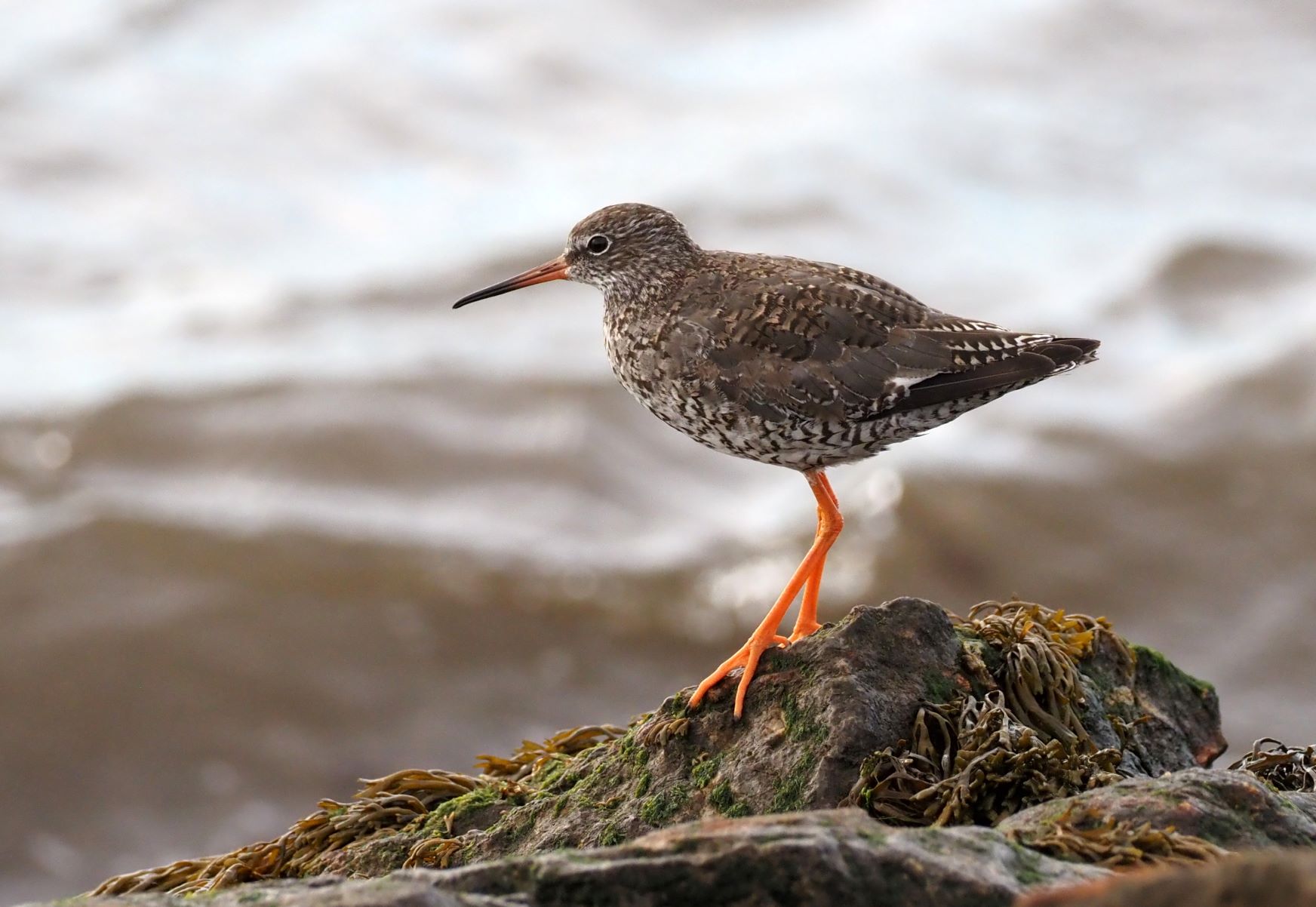
And when the throngs of people on the Royal Mile became too much, we headed out east along the Firth of Forth to Mussleburgh, the ‘Riviera of Edinburgh’ and home of horse racing. Birding from the seawall here produced the first true flavors of avian Scotland, with Velvet and Common Scoters, Common Merganser, Sandwich Tern, Ruddy Turnstone and a few Common Redshank.
We also had a good look at a Stock Dove, Northern Gannet and black-legged kittiwake. With great views over to the Kingdom of Fife to the north and back along to Old Reeky (Edinburgh’s nickname), good vibes were in the air as Scotland awaited.
We set forth from the heart of Edinburgh early the next morning in wet weather, and headed straight across the firth over the new bridge, with our first stop being the Loch Leven RSPB (Royal Society for the Protection of Birds) Reserve.
The rain had ceased by the time we arrived, and there was a low cloud base, but the gap in the weather offered a decent re-fueling opportunity for thousands of Hirundines, mostly Bank Swallow, but also Barn Swallow and some House Martin. We also had our first Little Grebe, Common Buzzard, Reed Bunting, Eurasian Moorhen and Grey Wagtail of the trip, and got the chance to observe some close finches, which included Common Redpoll, Bullfinch and Chaffinch.
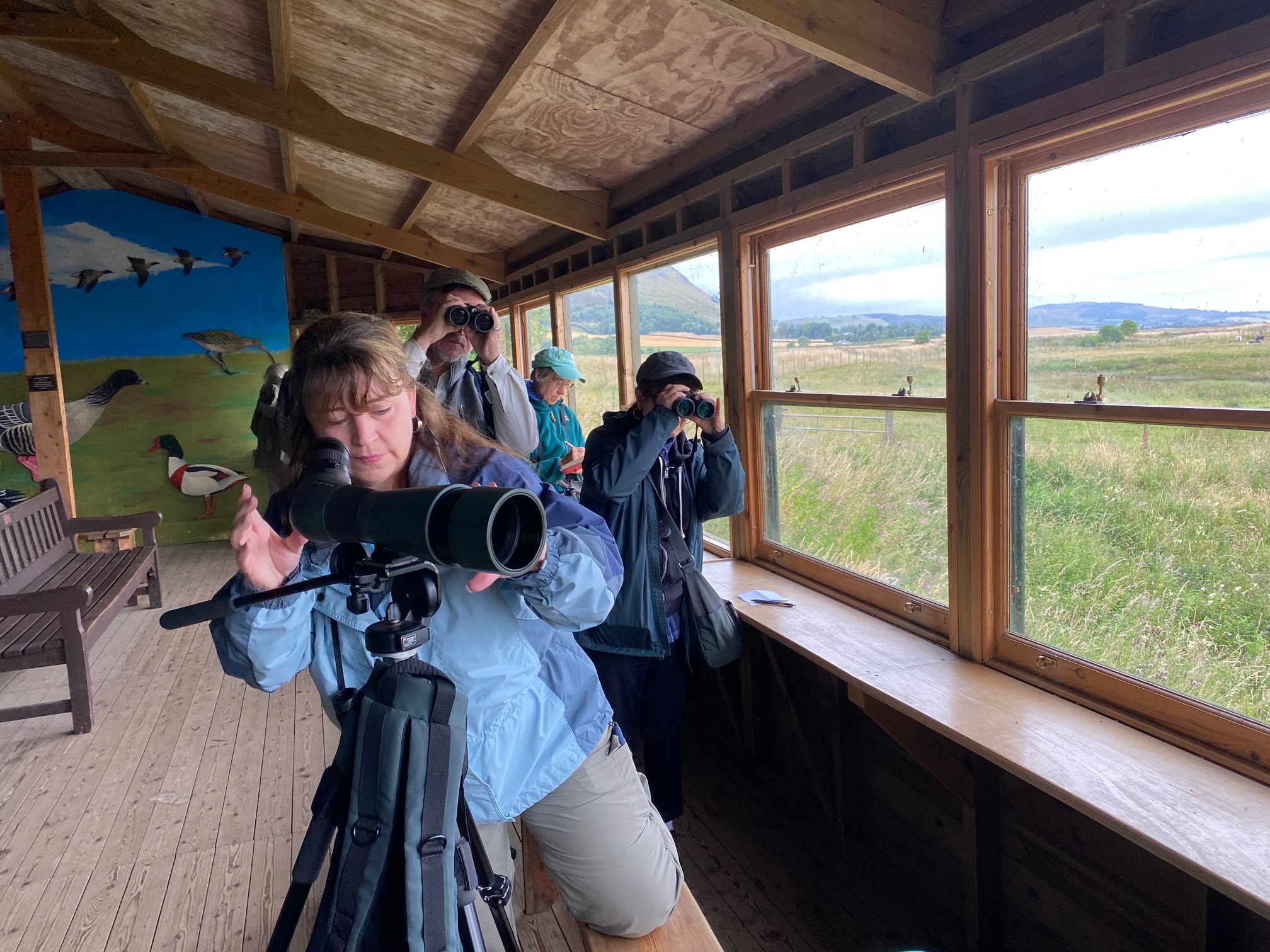
With some nice species under our belt we continued north for the remainder of the afternoon, until we reached the Cairngorm National Park, our ultimate destination for the next couple of days.

We headed straight for our awesome base in Aviemore (please check out Eriskay B&B and Glamping Pods run by Ken and Gill. They really looked after us, great stay).With a pre-dinner visit to the nearby Craigellachie NNR adding Spotted Flycatcher and Coal Tit plus both native deer species, (Red and Roe Deer), we hit the hay.
Monday’s pre-breakfast birding along the River Spey produced our first Red Crossbill and Osprey, but once in the old forests around Loch an Eilean things started to heat up with a few Scottish specialties including Crested Tit. The weather was great almost without a cloud in the sky and it was superb to be in the cool of the caledonian forests. A really outstanding habitat full of Scots Pine, Juniper (Juniperus) mid canopy plus Blaeberry, Cowberry (Vaccinium) underfoot amongst the lichens, mosses and liverworts.

It was here that Lauren’s keen eye found an active brood of Spotted Flycatcher in a split tree and we watched the adults return to feed the growing youngsters.

After a quick lunch stop, we headed up to the base of Cairngorm and the ‘ski lift’ area to take a closer look at the mountain ecology and as the weather was fine, to watch for birds of prey on the hillside. The mountain moorlands were all looking exceptional in usual summer fashion as all three species of heather (ie, Bell, Common or Ling Heather, and Crossed Leaved Heath) were in flower, so all was very purple and green.
One of my favorite sights in the Highlands is the pretty Bog Asphodel, the ‘bone breaker’, which is bright yellow so contrasts vividly with the heathers. Other plants we saw included Greater Sundew (Drosera), and Heath Spotted-orchid.
We returned to our base in Aviemore and some of the group had a wee pre-dinner whiskey tasting courtesy of Ken, our host. Whiskey tasting is a science believe me and it was hilarious to hear the group get louder and louder with every sip.
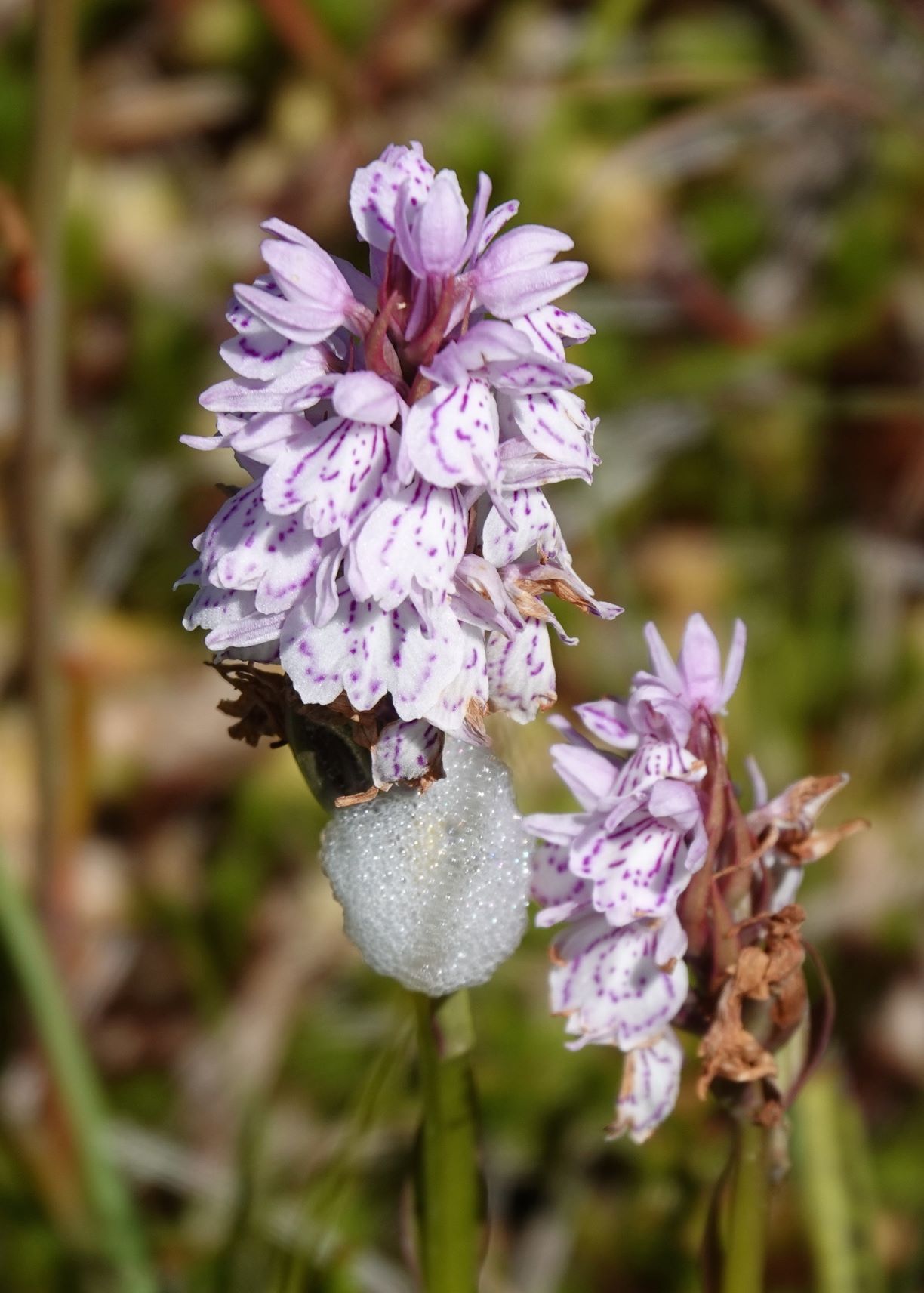

The remainder of this section around the Cairngorms National Park was spent visiting Loch Garten RSPB, a site where the osprey famously re-established itself way back in 1954, so a lot of birding history here. This early Royal Society for the Protection of Birds (RSPB) project really kickstarted the whole concept of ecotourism in the UK. It was fabulous to catch up with descendants of these magnificent birds in the nest from the center’s high tech control room and interpretive space. A great facility and such a change from the good old days with its ramshackle caravans dotting the site. A walk out onto the reserve at Loch Mallachie produced Common Goldeneye, and we also spotted a flock of Scottish Crossbill, the UK’s only endemic bird species. The forest here is absolutely stunning, and the blustery day made for very few midges. Lovely peace!
We said your goodbyes to Aviemore after a full Zulu blessing, and headed north for the Black Isle and a favorable tide. Our aim was to get there in time to witness the activities of the local Bottle-nosed Dolphins. These are the most northerly population in the world, and since the Moray Firth is pretty chilly, the largest too, with adults reaching over 13 feet. Their population stands at about 200 and a large portion feed inshore at Chanonry Point Lighthouse.

They can come pretty close as there’s quite a deep drop off near shore here which acts as a bottleneck for various fish species.
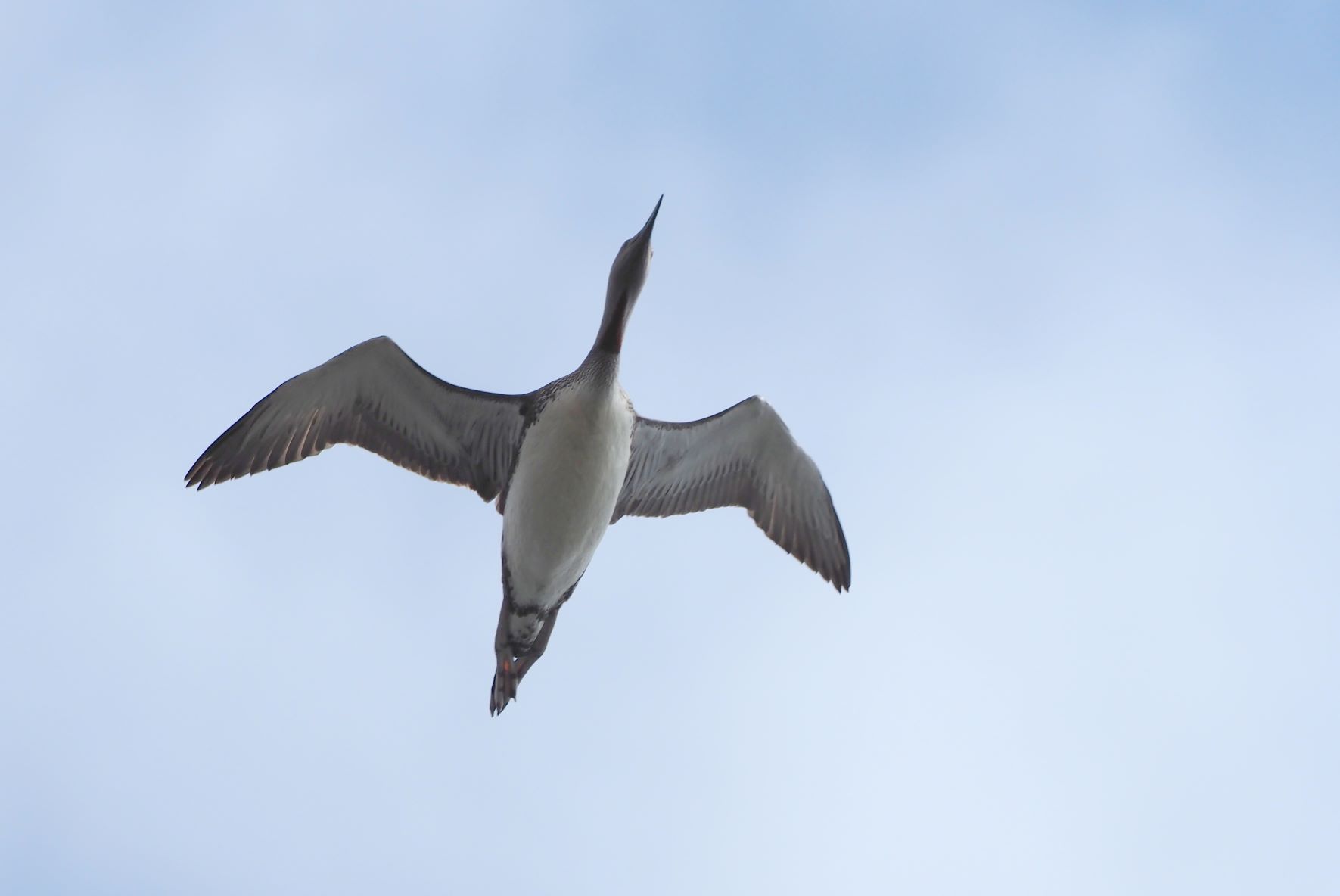
We saw some great views of at least 6 individuals and the birding was pretty good also with Northern Gannet, Red-throated Diver, Red Knot and Bar-tailed Godwit, but as the beach was by now getting quite busy with people, we thought it a good chance to sneak off for lunch to avoid the rush.
On the way down the beach to the beautiful town of Rosemarkie, we spotted a small Bank Swallow colony which really amounted to two holes. The adults must have had a late brood down there, as they visited several times with food. After a ‘nip through’ the golf course and some nice Oystercatchers, we continued by minibus back along the coast westwards towards North Kessock on the Beauly Firth. Here we searched along the entire north shore for European Otters, but did spot Eurasian Curlew, Northern Lapwing, and some very obliging Red Kites near the Muir of Ord. And as time and tide waits for no man, we headed for the delights of Inverness, the capital of the Highlands with its many food options. After a great Mexican dinner (Scottish style, no haggis tacos for me thank you), we had a nice post dinner walk back to our accommodation which included a unique view of Common Mergansers. Whilst waiting on the bridge a small group were feeding directly underneath us, and it was a privilege to watch them swimming in search of food amid the hustle and bustle of the city.
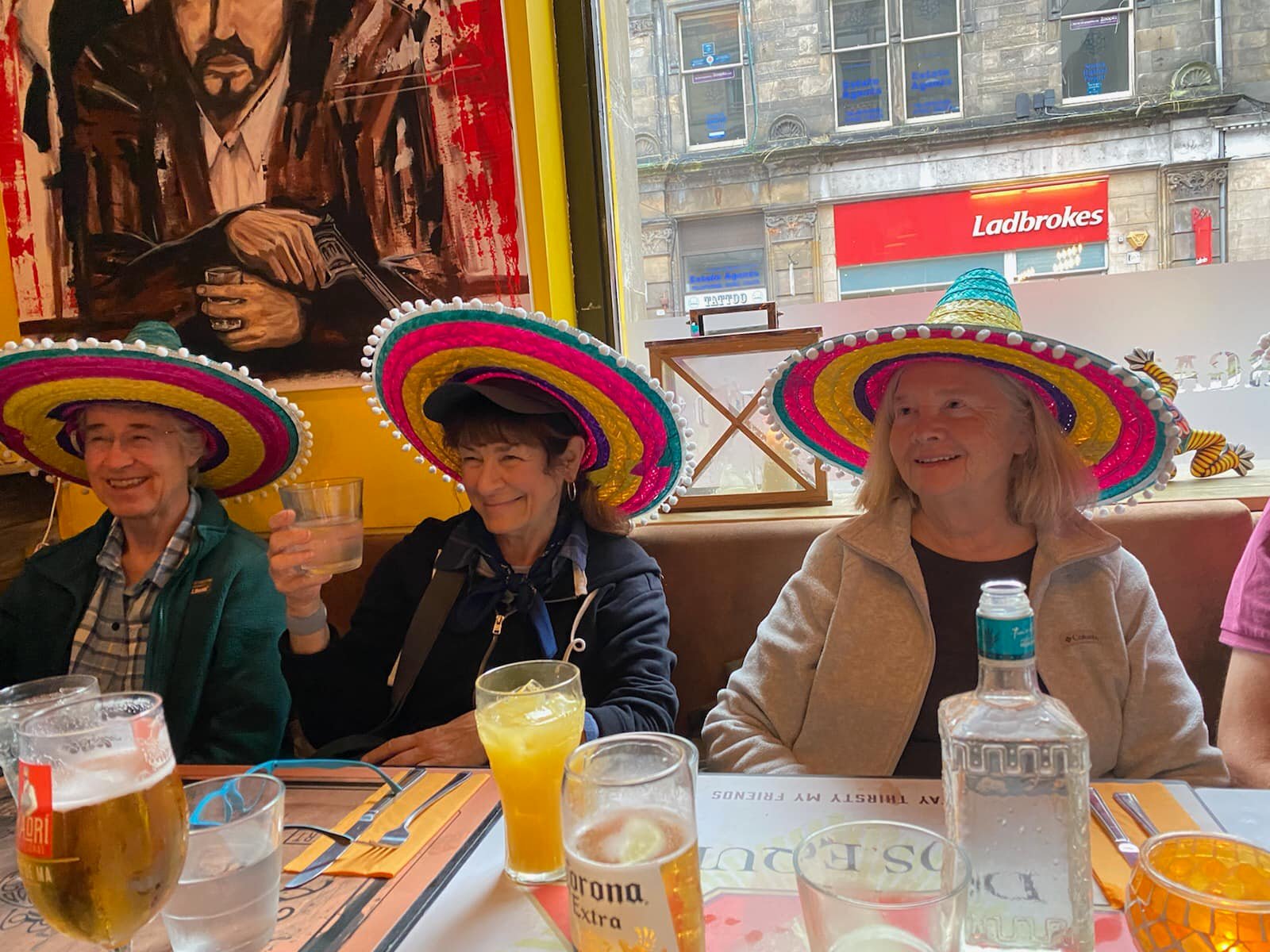
The next day it was time to finally head for the west coast, and after another look for post-breeders around Strath Glass we headed down Loch Ness with a quick stop at Urquhart Castle. We arrived on a wet west coast mid-afternoon, and initially stopped off at Eilean Donan Castle.

The majority of our group opted for a look around the castle, but others were rewarded by a Golden Eagle and various lichens. I must add that the lichen diversity of the west coast really stands out and is often referred to as the Celtic Rainforest.

Some of the older trees have huge patchworks of lichens as diverse as anywhere in the world including tree lungwort (Lobaria pulmonaria).
Our base for our first of three nights on the Isle of Skye was at Kyleakin so easily within reach of sites on the Sleat Peninsula and Broadford Bay. Birds we encountered here included Tawny Owl, Arctic Tern, Red-breasted Merganser, Rock Pipit and Eurasian Stonechat.
Our aim the next day was to circumnavigate the entire Trotternish Peninsula, so we headed north to Portree early. This rugged landscape is tagged often as the theater of geology, so we all wanted to see some of this play out so hit the more famous sites which included the infamous Old Man Of Storr, Kilt Rock and Mealt Falls and Staffin Bay on the peninsula’s east coast. Staffin Bay is particularly stunning and we spent time pondering the old salmon fishing history and searching for dinosaur footprints on the shoreline. These are at least 50 cm long with the experts concluding their origin from 160 MYA, probably from a small ornithopod. We also encountered our first Common Wheatears, Euasian Sparrowhawk and Common Greenshank, Great Skua and Black Guillemot of the trip close to the shore.

We arrived in Dunvegan for the night and quickly settled into our accommodations. We headed down to Neist Point Lighthouse the next day to observe moving seabirds and cetaceans.

by Mike Werndly
The point commands excellent views of the entire Minch, but was unfortunately more than a little murky on the day we visited. The steep walk down was worth it however, as we were afforded views of Northern Fulmar, Black-Gulliemot (Tystie), European Shag, Black-legged Kittiwake, and our first Manx Shearwater of the trip.
In the birding world, Scotland is known for its international importance for seabirds, with 24 species regularly breeding around its extensive coastline making it one of the best places to watch seabirds in the whole of Europe. After lunch we headed to Harlosh point where we connected with a nice flock of Twite, Common Shelduck and an adult White-tailed Eagle that literally flew over the bus!
Logistically, the journey out to the Outer Hebrides, the last phase of the trip, was always going to be a little challenging due the number and early nature of the ferry crossings, that is to say, an early ferry over to Loch Maddy on North Uist and then another early one from Lochboisdale to Mallaig the following day.

It made for an exciting birding day however, with the chance to explore three new islands, all of which are connected by causeways. We drove north to south taking in North Uist Benbecula, and South Uist.

We arrived early at the port of Uig with our full manifest of passengers and cargo, and eagerly boarded the ferry for the 2 hour crossing. We all hit the galley straight off the bat as everyone was a little hungry with many trying the full Caledonian MacBrayne breakfast. In my opinion it is one of the best, and very much needed as the crossing turned out to be quite productive with Atlantic Puffin, Great Black-backed Gull, Black-legged Kittiwake, Great Skua, European Storm Petrel, plenty of Manx Shearwaters. And to cap it all, we were greeted on the other side by 3 White-tailed Sea Eagle.

Other highlights included a great view of an adult male Razorbill with its youngster at sea. Afterall, razorbill fathers are good parents as they hang with the juvenile for several weeks until they’ve grown those essential flight feathers, and can forage for themselves.
Unfortunately, there was a low cloud base that day, so the island landscape remained tantalizingly shrouded in mist, but mysterious and beautiful nonetheless.

Once landing in Loch Maddy we headed straight off westwards into the murky treeless landscape. Our excitement was soon rewarded with a Whooper swan, Arctic Loon, Parasitic Jaeger, Red-throated Loon, Merlin, Hen Harrier, Northern Lapwing, Euraian Golden Plover, Sanderling Dunlin, and Ringed Plover.

The ‘machair’ habitat around the RSPB reserve at Balranald was a personal highlight. An outstandingly beautiful landscape on the Atlantic edge with its white sandy beaches, derelict cottages and the sound of shorebirds.
Our base for the night was all the way down near the southern tip of South Uist near Lochboisdale at Daliburgh, and we all enjoyed the after dinner birding down at the tip as we searched for corncrake in the beautiful evening light. If you could pick one bird that stood out for the Uists, it would be the awesome views we had of a beautiful Short-eared Owl floating along next to the road, and was a fitting end to a beautiful day’s birding.
I must admit the early start the next day was a little uncivilized, but absolutely necessary if we all wanted to get back to the mainland and our proper lives! So we set forth to Mallaig in poor visibility. This was a shame, as the route takes you past some world class scenery usually, but not this day as was a very low cloud base! We had been lucky with the weather up to this point, and took this fact as our mantra. We could just make out the islands of Rum and Canna in the murk.

Close birds viewed from the deck included Atlantic Puffin, Northern Gannet, and Manx Shearwaters. The Isle of Rum is the largest breeding colony for the species in Scotland so frequency in the surrounding waters are high, and we watched many as we headed into the Mallaig, and sadly our last full days birding.
On arrival into this busy port town, we met up with Martin Carty, a local bird specialist who is based in Mallaig, and traveled around Loch Morar looking for eagles and observing past nest sites. The weather was pretty poor however, so it was a little hard work, but we did see an adult sea eagle in a break in the weather and some fantastic coastal scenery around the Ardnamurchan Coast.

Our last night was spent in a not so sunny Mallaig, and in the morning we looked through the large gull flocks around the harbor for anything interesting. Herring Gull is the most frequent here, even breeding along the train tracks in town. Our hotel actually gave everyone ear plugs as they call loudly from time to time.
We met early for our last breakfast and loaded the minibus like pros and started our journey southwards towards the central belt and our final destination, Glasgow. However, on the way we got the chance to spend a little time in beautiful Glen Coe and also enjoyed the scenery of Loch Lomond. All in all, we learned much about this northern corner of Europe during this ten day trip. It was a great adventure exploring many of Scotland’s varied landscapes and wildlife!
More Birds…
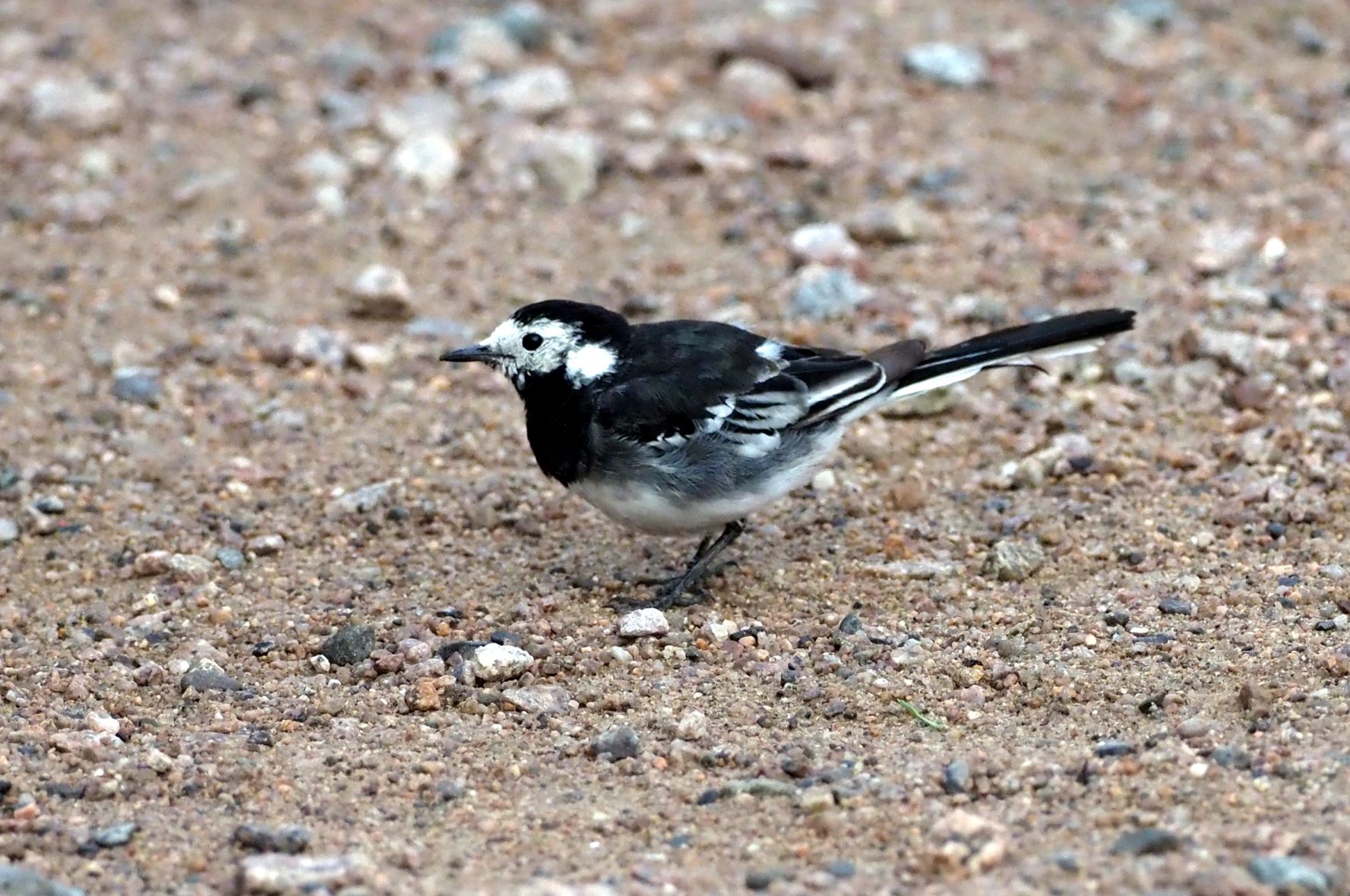



by Simon Thompson




by Simon Thompson



by Simon Thompson

by Simon Thompson







